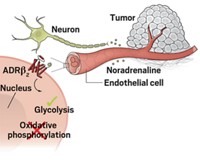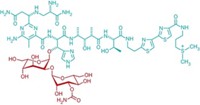Advertisement
Grab your lab coat. Let's get started
Welcome!
Welcome!
Create an account below to get 6 C&EN articles per month, receive newsletters and more - all free.
It seems this is your first time logging in online. Please enter the following information to continue.
As an ACS member you automatically get access to this site. All we need is few more details to create your reading experience.
Not you? Sign in with a different account.
Not you? Sign in with a different account.
ERROR 1
ERROR 1
ERROR 2
ERROR 2
ERROR 2
ERROR 2
ERROR 2
Password and Confirm password must match.
If you have an ACS member number, please enter it here so we can link this account to your membership. (optional)
ERROR 2
ACS values your privacy. By submitting your information, you are gaining access to C&EN and subscribing to our weekly newsletter. We use the information you provide to make your reading experience better, and we will never sell your data to third party members.
Biological Chemistry
Arsenic's Method of Cardiovascular Attack
Metal Toxicity: The metal leads to oxidative stress in cells and, in turn, leaky blood vessels
by Steven C. Powell
October 27, 2010

Tens of millions of people worldwide drink worrisome amounts of arsenic in their water every day. Epidemiological studies have linked chronic arsenic exposure to diabetes, cancer, and heart disease. Now a study in Chemical Research in Toxicology (DOI: 10.1021/tx100191t) illuminates how the toxic chemical weakens veins and arteries through oxidative stress.
While researchers have focused extensive research efforts on understanding how chronic arsenic exposure leads to cancer, they still know little about how the chemical promotes cardiovascular illnesses.
One hallmark of many cardiovascular diseases is leaky blood vessels. Recent studies have shown that arsenic can weaken the endothelial cell barrier that lines the walls of most arteries and veins by creating gaps between the cells. Honglian Shi of the University of Kansas, Lawrence, and his postdoctoral scholar Lingzhi Bao wanted to understand the cellular mechanism behind this observation.
They focused on a protein called vascular endothelial growth factor (VEGF), which can affect the permeability of blood vessels' barriers: Greater VEGF expression leads to more-porous walls. The researchers wondered if reactive oxygen species (ROS), such as hydrogen peroxide and the superoxide anion radical, linked arsenic and VEGF, because cells often produce ROS when exposed to a form of arsenic called arsenite.
In one experiment, they quantified permeability in mouse endothelial cells by counting gaps between the cells with a microscope. When the researchers added arsenite to the cells, the number of gaps between cells nearly tripled.
The scientists then examined cells exposed to arsenite after they had added either a VEGF antibody or the antioxidant N-acetyl-cysteine to knock down VEGF and ROS levels, respectively. In both cases, cell permeability remained the same as the control cells. By removing VEGF and ROS one at a time, Shi and Boa showed that the arsenic-induced weakening of the endothelial cell layer involved a ROS–VEGF-linked pathway.
"This is an important contribution," says biochemist Xianglin Shi of the University of Kentucky, Lexington. He also sees a potential link to cancer: His lab has observed that arsenic up-regulates a transcription factor that controls VEGF expression in human prostate cancer cells.





Join the conversation
Contact the reporter
Submit a Letter to the Editor for publication
Engage with us on Twitter